Making floral soap is a beautiful way to not only enhance the bar you are making visually, but also harnesses any herbal benefits the flowers, herb plants, or roots they may possess.
The type of soap base you are using must be considered when collecting flowers to dry to suspend in a bar of soap.
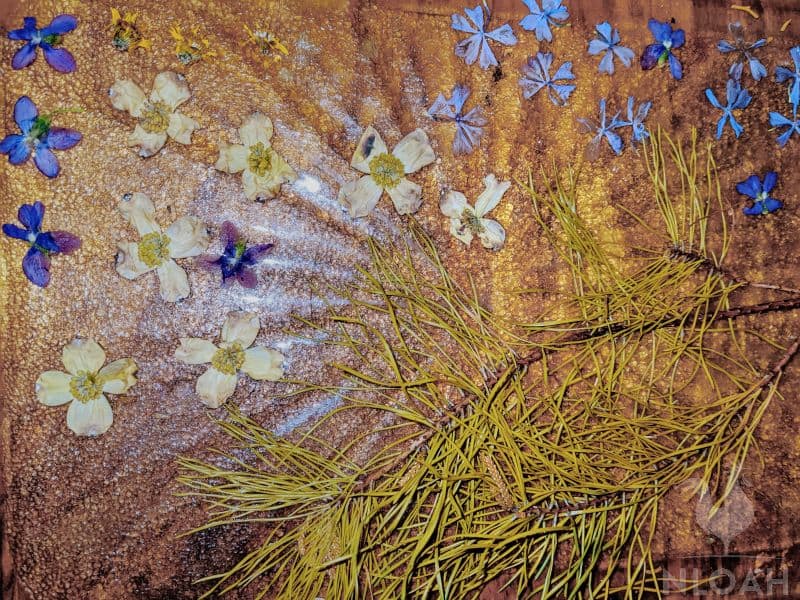
If you are not making your soap base from scratch using wood ash to make lye or buying lye to use, then you are most likely using a melt and pour (MP) soap base or a cold process (CP) soap base.
Dried flowers work incredibly well in most melt and pour soap bases. But, when used in a cold process soap base the flowers tend to lose their color in a far shorter amount of time.
The exposure to lye during the saponification process often causes natural matter to turn black or brown during the curing process.
This does not mean that dry flowers cannot be used in CP soap, but you must know going into it that the discoloration is likely to occur.
What Is Saponification?
Saponification is the process where oils, fats, or lipids and alcohol, sodium, or potassium hydroxide – lye. A fatty acid salt and glycerol are produced, and we call this material… soap.
Clear or Colored Soap?
Typically, dried flowers are used in a soap that has a clear base, like a clear glycerin melt and pour soap base. But, adding a light bit of color tint to a clear glycerin that matches the floral color scheme, is also fairly common.
Whether you are using a mica powder, liquid food safe dye, liquid food coloring, or spices to color the soap, you should play around with the color in a few batches of soap before attempting to suspend dried flowers in soap.
Some color offers a far more deep or vibrant hue than others and may hide the presence of the flowers almost entirely.
You can also opt to make a two toned soap with only the portion with the flowers being clear, and the bottom part of the bar being white.
Sometimes, soap makers use a clear glycerin to suspend dried flowers in, and then use a goat’s milk colored soap base beneath it as a plain bar.
Creating a more elaborate soap using a glycerin top with suspended flowers and a solid base that have had herbs, oatmeal, shea butter, or honey worked into the recipe can help garner the potential healing and skin moisturizing benefits of the additional ingredients.
To make a combo goat’s milk soap base with a glycerin top to house dried flowers, use a one to one ratio of the clear glycerin to solid colored soap base.
Make the glycerol portion in your mold first. Once it has hardened, spritz the exposed part with rubbing alcohol and then pour in the second layer.
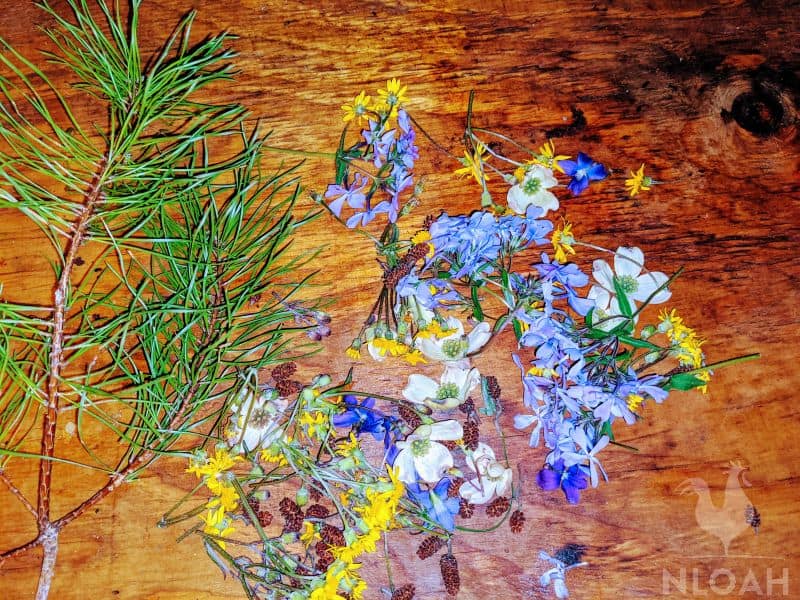
Can You Use Fresh Flowers In Soap?
Fresh whole flowers will mildew can become discolored in a short amount of time. If you want to use fresh flowers in a soap recipe it is highly recommended to puree them or use an infusion to add their color and potential benefits to the bar of soap.
The only possible exceptions to the “rule” against using fresh flowers in soap making involve using whole pieces of goldenrod, calendula, and daffodils.
Pine needles and small pine cones can also be suspended in bars of melt and pour soap base.
50 Dried Flowers to Add to DIY Soap
| Roses | Daisies |
| Calendula | Lavender |
| Echinacea | Jerusalem Artichokes – Sunchokes |
| Tulip Petals | Jasmine |
| Violets | Peoni |
| Bleeding Hearts | Carnations |
| Corn Flowers | Primrose |
| Safflower | Marigolds |
| Dogwood Blossoms | Cherry Blossoms |
| Pansies | Clover |
| Ferns | Forget Me Nots |
| Gypsophila | Blue Lotus Flower |
| Milkweed | Pine Needles |
| Magnolia | Hops |
| Heather | German Chamomile |
| Baby’s Breath | Goldenrod |
| Blue or Black Mallow | Pomegranate Flower |
| Red Gomphrena Flower | Chrysanthemum |
| Linden | Elderflower |
| Mullein Flower | Apple Blossoms |
| Chestnut Flower | Peach Blossoms |
| Tansy | Arnica |
| Mase Blades | Moss |
| Opuntia | Roman Chamomile |
| Marshmallow Herb Flower | Orange Blossoms |
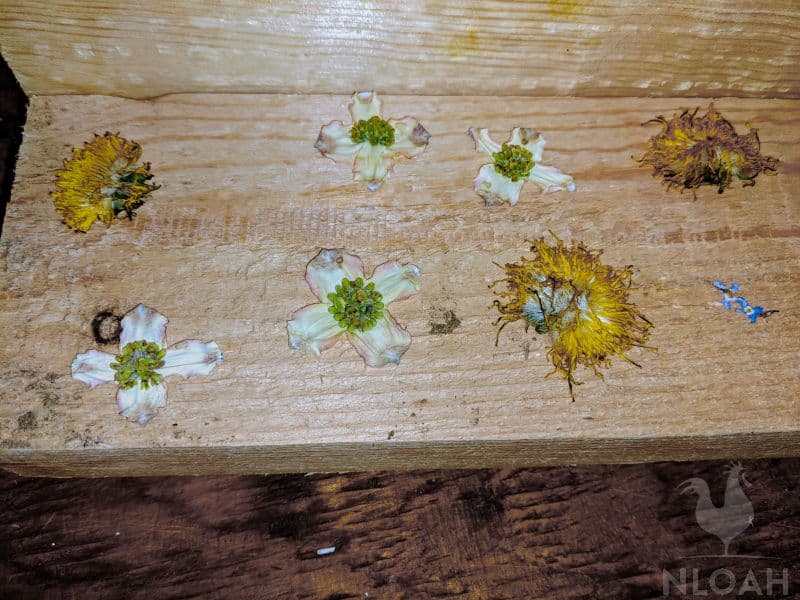
Flower Selection Tips
Small dainty flowers may look best in soap bars depending upon the size of the mold, or scattered around one or two larger flower heads, buds, or blossoms.
But, the smaller the flower the more difficult it will be to remove it from a flower press or from a tray if using a conventional oven or microwave oven to speed up the drying process.
With the exception of pine needles, goldenrod, and baby’s breath, simply allowing the flowers to dry on the kitchen counter or another open air environment will not work. Nearly all other types of flowers will either curly up, shrivel up, or others become too unattractive to use in a bar of soap.
Using a thick flower like dandelions can also be problematic. Some soap makers can pluck these under-appreciated flowers from the backyard and dry them beautifully to use in soap. I have never been so lucky, no matter what type of drying or pressing method that I use.
Pressing the dandelions or a flower with a similarly thick bottom as flat as you can without causing it to tear apart, is the best route to go when attempting to dry and press these types of flower to use for soap making.
I have not yet given up entirely on using dandelions in my soap, but until I can master drying them flat, intact, and pretty I simply mix in some dandelion infusion with the melt and pour soap recipe to garner the potential skin moisturizing as well as insect sting and bite fighting potency of this cute little yellow “weed.”
Shredded Flowers In Soap Making
In addition to using flowers whole in soap making, you can also shred them. Many a time I have failed at drying tiny little adorable flowers and instead of pitching them, I shredded them up, and used them to still add color and texture to a melt and pour soap recipe.
Pressing and Drying Flowers Using a Press
You can purchase a flower press, they are not an expensive off grid gadget, make one your own, or merely use some handy scrap materials like I do to press flowers flat and dry them.
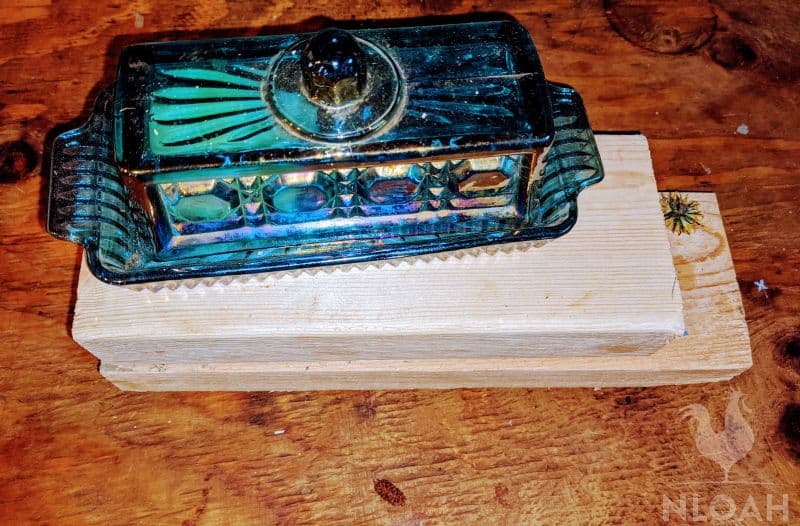
As you can see in the photo above I just used a couple scrap 2 X 4 boards and placed a heavy butter dish on top of them to get the job done. If you are pressing a large amount of flowers at once, using a scrap piece of plywood, luan, or particle (OSB) board with some bricks or cinder blocks placed on top, will work quite well, also.
How long it takes to dry the flowers depends on how large and thick they are. A more dense flower like rose buds, tulip petals will require at least 24 hours if not longer to dry completely in a flower press.
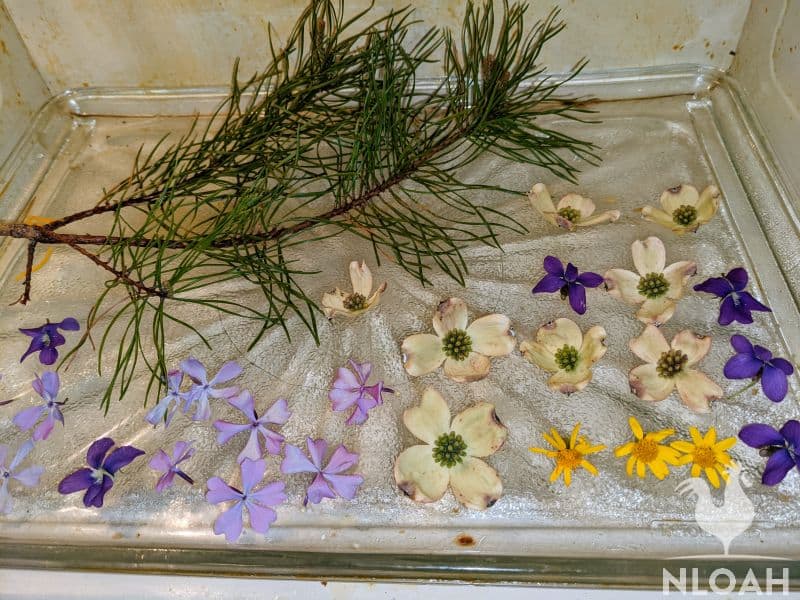
Drying And Pressing Flowers In The Microwave
To speed up the drying and petal flattening process you can also dry flowers in the oven between two metal baking sheets or in the microwave. As you can see in the photo above, I placed the flowers to be dried right onto the glass plate that goes in the microwave.
I have dedicated our old microwave just for soap making and crafting projects, but using your regular kitchen microwave should not harm it all as long as you are using microwave safe items for the pressing, and only using flowers that are not toxic – which you obviously would not want to handle or lather onto your body, anyway.
Next, I placed some fire brick on top of them to make sure they laid flat and did not curl. You do not need to buy and use fire bricks.
I just happened to have some handy once, and they worked so well and safely inside of either the microwave or the oven I decided to keep them with my soap making supplies for future use.
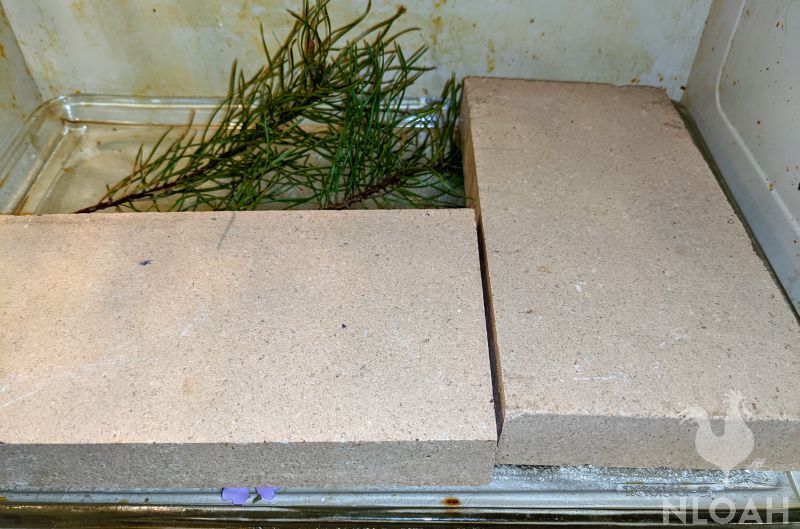
To keep the flowers flat in the microwave oven or a conventional oven you could also use standard bricks, glass Pyrex dish (unless it is vintage and came from grandma before microwaves were invented) glass measuring cups, etc. Basically, any hard and heavy item that is microwave safe and fits:
You can see in the photo below how well the flowers were pressed and dried after spending only five minutes in the microwave. The evergreen sprig lost some of its vibrant green color. Had I had the time to just let it air dry, the deep green shade would not have either faded at all or just slightly.
The flowers will lose their scent after being pressed and dried. If you want a soap with suspended rose petals to smell like a rose or a soap with shredded lavender to boast the sweet smell of the spring herb, just add a few drops of the appropriate essential oils into the soap base mix.
Remember to use caution when adding essential oils because some are not recommended for use by pregnant or nursing women, children under the age of two, or individuals with specific health conditions, or who are on certain types of either over the counter or prescription medications.
Homemade Soap as a DIY Gift
Floral soap not only looks lovely sitting in a rustic dish on your bathroom counter, the bars also make excellent and inexpensive homemade gifts. Last year for Mother’s Day my daughter, grandchildren, and I made 12 Months of Soap Baskets for my mother and mother-in-law.
Each soap was themed to match the month or season and the flowers that grew in it. The bars were individually wrapped in tissue paper with a hand printed label. The gift was so well received I have made many more for other occasions.
The February soap contains red roses, and was scented to smell like chocolate. The July soap contained red, white, and blue flowers. The October soap contained flowers in earth tones and was scented to smell like cinnamon and nutmeg. The Christmas soap contained miniature pine cones and evergreen sprigs, and smelled like peppermint.
The personalization and creative options are almost limitless when you use dried flowers to make one of a kind soaps for use on your homestead and to give as gifts made from your own loving hands using the plants that grow on your land.
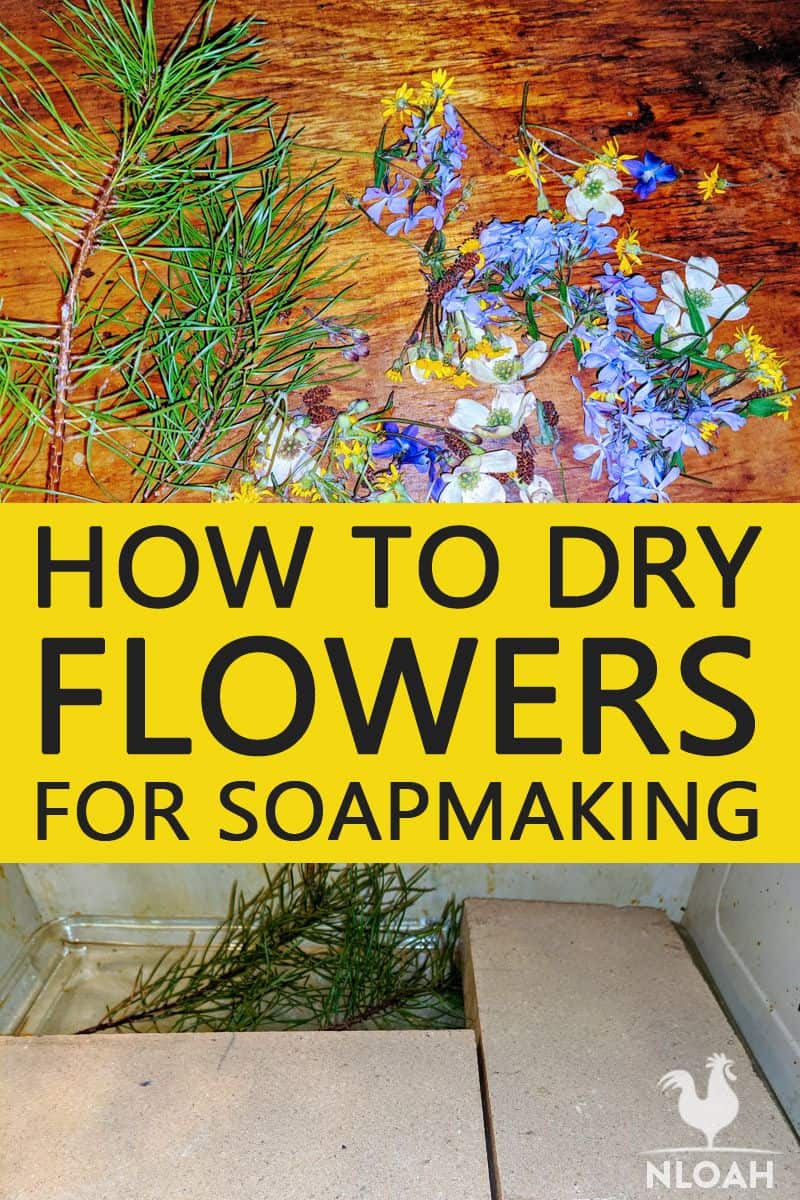

Tara lives on a 56 acres farm in the Appalachian Mountains, where she faces homesteading and farming challenges every single day, raising chickens, goats, horses, and tons of vegetables. She’s an expert in all sorts of homesteading skills such as hide tanning, doll making, tree tapping, and many more.
